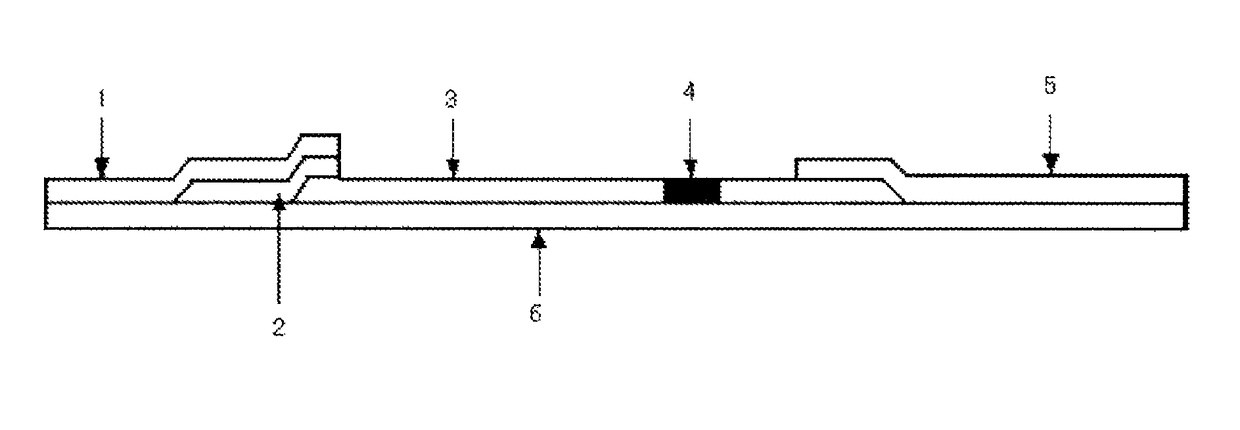Immunochromatography device for detecting RSV
a technology of immunochromatography and rsv, which is applied in the direction of peptides, separation processes, instruments, etc., can solve the problems of increasing the risk of increased severity, severe symptoms, and inability to detect rsv, and achieves high-sensitivity, efficient capture of rsv antigen, and enhanced signal
- Summary
- Abstract
- Description
- Claims
- Application Information
AI Technical Summary
Benefits of technology
Problems solved by technology
Method used
Image
Examples
example 1
(1) Preparation of Anti-RSV Monoclonal Antibody
[0109]BALB / c mice were immunized with a purified RSV strain or RSV-infected cells. In order to determine whether the titer of antibody against the F protein or N protein of RSV was increased, blood samples were collected from the mice. The spleen was harvested from each of the mice having increased antibody titers, and spleen cells were fused with mouse myeloma cells by a method proposed by Kohler et al. (Kohler et al., Nature, vol, 256, p 495 to 497 (1975)).
[0110]The thus obtained fused cells (hybridomas) were cultured in an incubator at 37° C., and the antibody titers in culture supernatants were determined by ELISA using plates on which the F protein antigen or N protein antigen of RSV was immobilized. The hybridomas whose culture supernatants had increased titers of antibody against an F protein or N protein derived from each of the subtypes A and B of RSV were selected. Further, the hybridomas were purified (singly cloned) by cloni...
example 2
Study of Antibody Ratio in Determination Region
(1) Preparation of Determination Region of Chromatography Medium
[0139]A determination region was prepared using the same anti-F protein monoclonal antibody and anti-N protein monoclonal antibody as used in the above (2) in Example 1. More specifically, a determination region was prepared in the same manner as in the above (2) in Example 1 except that the mixing ratio between the anti-F protein antibody (anti-FP antibody) and the anti-N protein antibody (anti-NP antibody) was changed to 2:1, 1:1, 1:2, 1:3, 1:4, and 1:5.
(2) Preparation of Immunochromatography Device
[0140]An anti-F protein antibody-containing labeling reagent and an anti-N protein antibody-containing labeling reagent were prepared in the same manner as in the above (3) in Example 1. These reagents were mixed in different mixing ratios of 2:1, 1:1, 1:2, 1:3, 1:4, and 1:5 to obtain mixed solutions, and an immunochromatography device was produced in the same manner as in the ...
PUM
| Property | Measurement | Unit |
|---|---|---|
| pore diameter | aaaaa | aaaaa |
| particle diameter | aaaaa | aaaaa |
| particle diameter | aaaaa | aaaaa |
Abstract
Description
Claims
Application Information
 Login to View More
Login to View More - R&D
- Intellectual Property
- Life Sciences
- Materials
- Tech Scout
- Unparalleled Data Quality
- Higher Quality Content
- 60% Fewer Hallucinations
Browse by: Latest US Patents, China's latest patents, Technical Efficacy Thesaurus, Application Domain, Technology Topic, Popular Technical Reports.
© 2025 PatSnap. All rights reserved.Legal|Privacy policy|Modern Slavery Act Transparency Statement|Sitemap|About US| Contact US: help@patsnap.com

